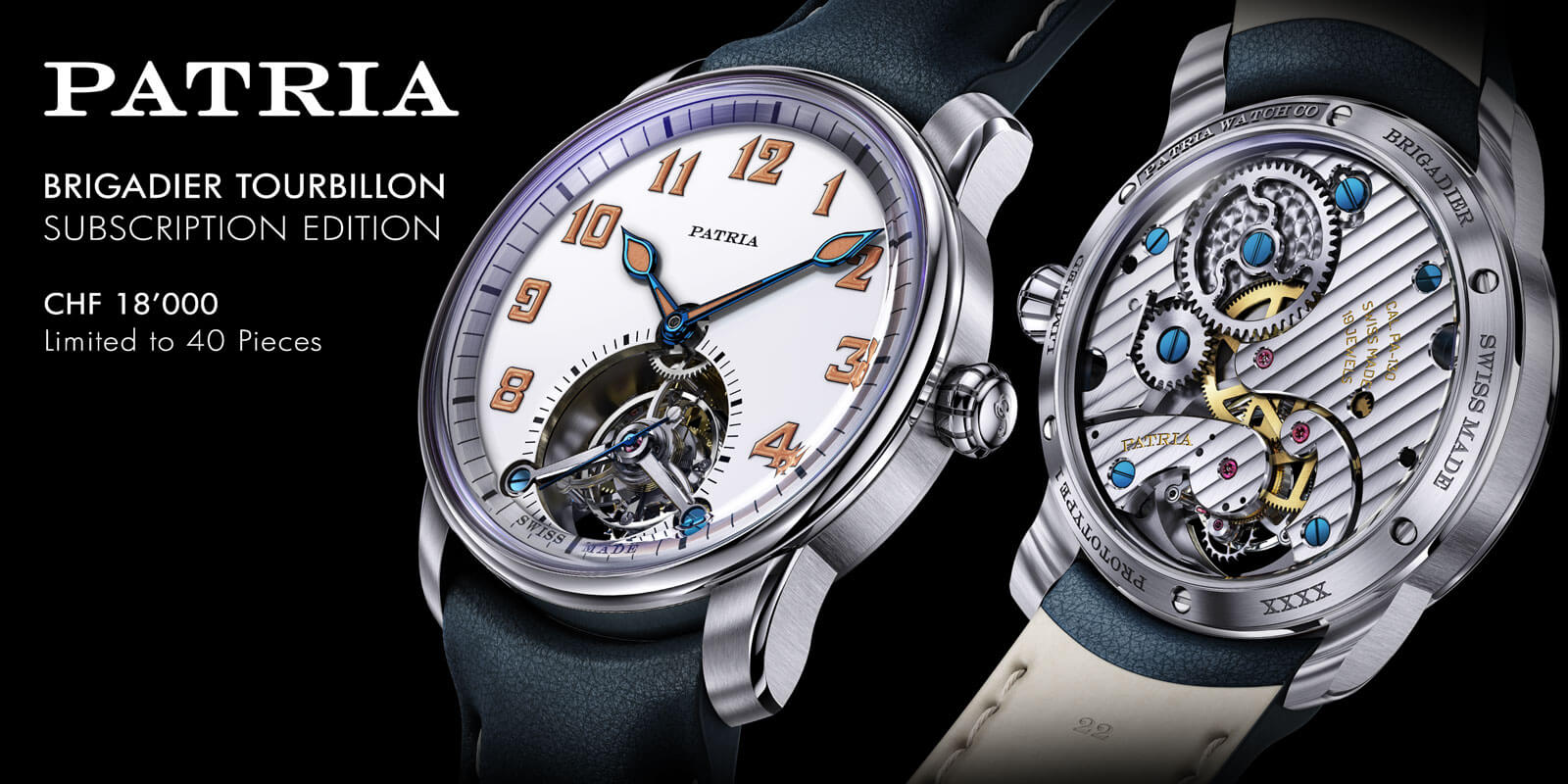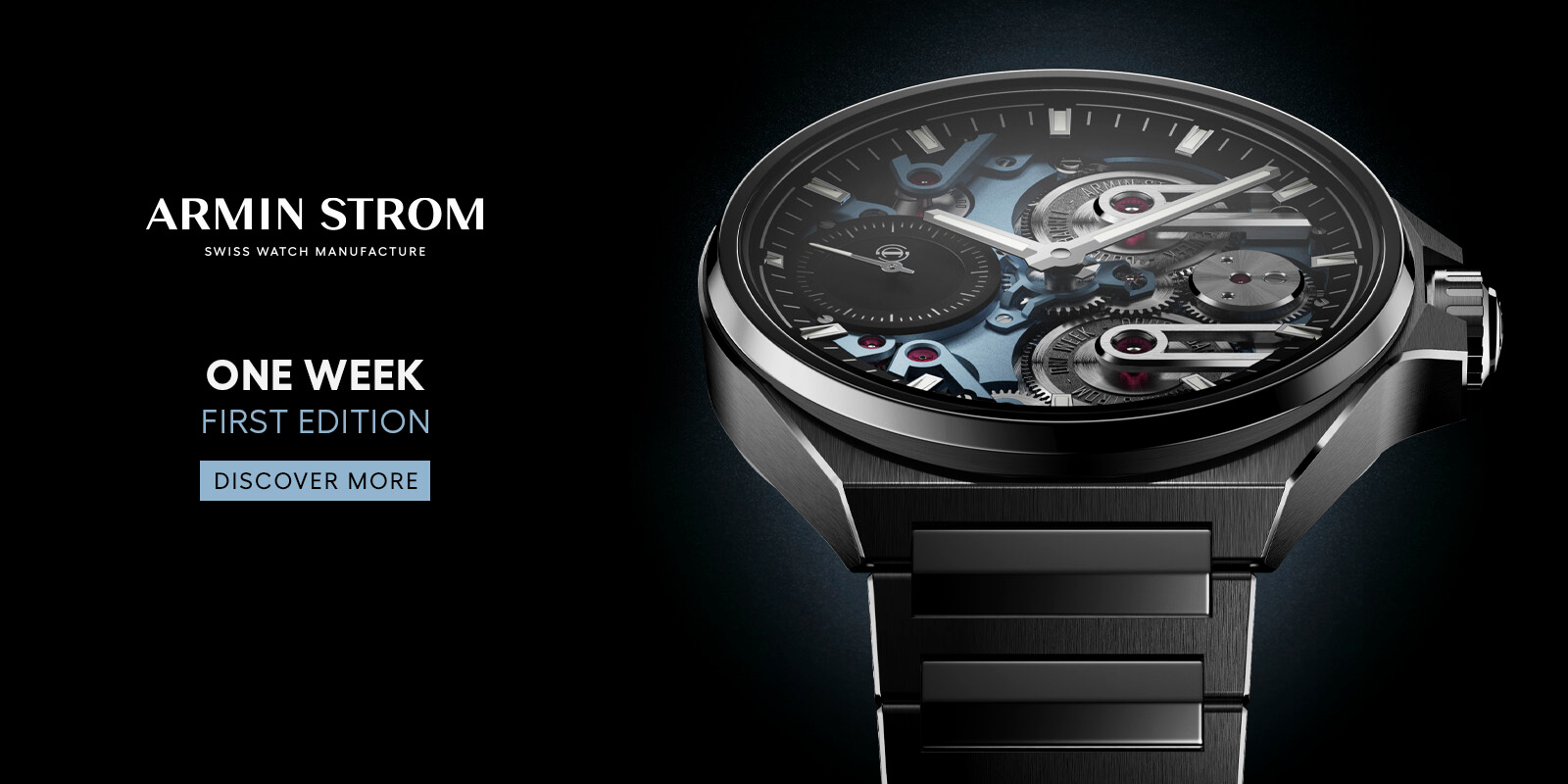What Being a Watch Collector Means to Me
by GaryG
Do you consider yourself a collector?
For years I resisted the label. Even when I agreed to take on the “Resident Collector” label here at Quill & Pad in 2014, I avoided calling myself a collector in my articles, instead using “enthusiast,” a term I still prefer.
That said, at some point, what began with a fascination with my grandfather’s pocket watch and continued with some early purchases in my twenties and thirties slowly tipped over into having, for lack of a better term, a watch collection.

In the beginning: the author’s grandfather’s pocket watch
What is a collection, anyway?
“An accumulation of objects gathered for study, comparison, or exhibition or as a hobby” – Merriam-Webster
I’ll agree with at least the first half of the formal dictionary definition as it suggests that the “accumulation” should have some thought behind it. I’ll come back later to the idea of accumulation for exhibition, but for now here’s my stab at a definition of the overall term: “a collection is an assortment of objects that reflects an underlying logic.”
No logic, no collection! That said, what constitutes a valid logic, at least to my way of thinking, covers a lot of territory and includes (perhaps among other) two major types: characteristic-based logic and principles-based logic.
————————————————————————————————————–
—————————————————————————————————–
What’s characteristic-based collecting logic? Think of a set containing every misprinted postage stamp of the twentieth century, or every U.S. railroad watch made between 1893 and 1895; with this sort of logic, completeness and physical similarity are the hallmarks of success.

None of these things is not like the others: Gilbert Albert for Patek Philippe (photo courtesy Roni Madhvani)
In watches, I think about Fred Mandelbaum (@watchfred on Instagram) and his stunning set of best-of-type vintage chronographs, and Roni Madhvani (@roni_m_29) with his assortment of vintage dress watches, including a fabulous grouping of Gilbert Albert-designed shaped Patek Philippe pieces.
Most recently Roni has been on the hunt for time-only Patek Philippe watches double signed by retailer Gumbiner – now there’s a characteristic-based search!

On the hunt: searching for specific pieces for a characteristic-based collection (photo courtesy Antiquorum via @roni_m_29)
Principles-based collection logic takes me immediately to (you knew this was coming, right?) my old pal Terry’s taxonomy: a healthy portfolio of watches should contain a managed mix of foundational pieces that will stand the test of time, patronage watches that come from small independent makers, and fun purchases that are affordable (whatever that means to you), and simply strike your fancy.
But it’s not only portfolio composition criteria that can shape a collection. My own watches range from mild to wild in appearance, but while it might take a while to ferret out the patterns, I do believe they exist.
—————————————————————————————————–
—————————————————————————————————–
Patronage: While I own select vintage watches, my collection leans significantly toward the work of living artists and craftspeople. I’m proud to have been an early supporter of independents from places reaching from Switzerland to Japan and from Holland to Finland and France to Russia.

Patronage in action: the author’s Tsunami by Hajime Asaoka
Essence and authenticity: This one is a bit difficult to describe. At its core, it’s about wanting to own pieces that directly reflect the personalities and passions of their makers and that are instantly recognizable as coming from that individual or company. A slightly more superficial interpretation is the idea of owning the reference that established the reputation of a given maker or watches that are destined to be historically significant. What it’s not about is owning the very same references as all my friends.

The watch that made Vianney famous: the author’s Vianney Halter Antiqua
Diamonds in the rough and ugly ducklings: It could have turned out very differently, but several references I’ve bought either before they achieved notoriety or when their popularity was at a low ebb have turned out to be sought after. And while others may never become mainstream favorites, they are long-term keepers for me.
When I bought my Vianney Halter Antiqua, it was widely considered an oddity. Some good luck played into my ability to commission one of the first Tsunamis from Hajime Asaoka, but my dogged pursuit was the main factor. When I happened upon a pink gold vintage Reference 1526 from Patek Philippe – the first ever serially produced perpetual calendar wristwatch – at the Geneva auction previews in 2018, I had no idea what it was and why it was so important yet apparently under-valued, but I fell in love and it’s now one of my favorite pieces and I’m widely identified with it.
—————————————————————————————————–
—————————————————————————————————–

Too small or too great? The author’s Patek Philippe Reference 1526 perpetual calendar in pink gold
On the modern major brand front, I leapt in on the A. Lange & Söhne Odysseus when it was taking an early bashing and it’s now getting solid wrist time – and is a collector darling. A decade before Max Büsser catapulted engraver Eddy Jaquet into the public eye with his series of Jules Verne-themed dials, I’d commissioned Eddy through Kari Voutilainen to create a unique officer back for my Masterpiece Chronograph II.
And when I surprised some folks by tracking down a vintage Type XX, the one I picked up wasn’t the trendy Breguet but the one bearing the name Mathey-Tissot, maker of all the Type XX pieces of the era whether labeled with its own logo, that of Breguet, or that of Girard-Perregaux.

Straight to the source: the author’s Mathey-Tissot Type XX
I’ll spare you (and me) the long list of watches – including some real stinkers – that have come and gone as my tastes have evolved and new opportunities have emerged. The point isn’t that I have some sort of unique foresight or taste, but that courage of one’s convictions can let you “buy what you love” as you build a collection that increases in stature with time and that there’s nothing wrong with collecting slightly offbeat pieces.
So what if “the market” doesn’t appreciate one of the greatest watches ever made, the Jules Audemars Equation of Time? I own one, love it, and am keeping it.

Off the beaten path: Jules Audemars Equation of Time by Audemars Piguet
There’s no obvious typology to my collection, but if I’m doing it right, people should be able to look at any individual choice I’ve made and conclude that it fits my personality as an enthusiast and – if I’m lucky – reflects a high level of discernment in choosing among the available options.
—————————————————————————————————–
—————————————————————————————————–
Watches at all price points: Ming, Kurono, M.A.D.1, Silberstein/Erard, and even the Timex re-edition of my first childhood watch, the Marlin; while the super-watches tend to get most of the attention in my writing and photography, be assured that on a given day it’s just as likely as not that I’m sporting a practical daily wearer that has a bit of pizzazz.

Affordable fun: Anniversary Mori by Kurono Tokyo
Friendship: One of the best things about watch collecting is that it’s a social hobby. I love sharing my searches for new pieces with friends and hearing about, and learning from, their perspectives. And if you look among the members of our NorCal gang, you’ll find that there are many references that are owned in common across the group, including most prominently our Voutilainen chronograph “buddy watches.”

Friendship piece: the author’s Kari Voutilainen Masterpiece Chronograph II
Back to the tougher question: what is a collector?
If a collection is a set of objects with an underlying logic, is someone who owns a connected group of things automatically a collector?
I could say “yes” and be done, but to me it’s more complex than that.
In a recent interview I quite liked, auctioneer Aurel Bacs was asked, “If I own 30 interesting watches, does it make me a collector?” He responded with that those without “a collector’s gene” might buy for practicality or vanity, but a collector buys “with his heart.” For Bacs, the time taken to “nurture . . . brain and heart” is how “you define a collector vs. a hoover.”
I find it very difficult to argue with that assessment! It brings me full circle to the idea of enthusiasm: without it, and the associated emotional and intellectual investment, I think it’s tough to argue that you are a true collector.

Emotional attachment: A. Lange & Söhne Pour le Mérite Tourbillon in yellow gold, the reference worn by Walter Lange
That makes it a bit tough for me to fully embrace the self-labeled watch investors and too-visible flex kings as core members of the watch community. If you’re going to spend 90 percent of your watch-related time bragging about how much you’ve made, at least on paper, or taking photos of your forearm with six or seven expensive watches draped over it, I won’t hate you.
But given the choice I’ll spend time instead with my pal Chuck, who could be wearing the F.P. Journe TS prototype on his right wrist and have the Derek Pratt oval tourbillon pocket watch in a zipper pouch in his vest and wouldn’t tell you unless you asked specifically.
I’ll also argue that collecting is dynamic, not static. If you’re truly engaged in a topic, it stands to reason that you will learn and that your tastes will evolve – and your collection will shift as a result, including for most of us the need to sell some treasured pieces to afford others. I suppose that it is possible to reach a true personal end point with a collection, but I certainly haven’t gotten there yet. And as much as friends joke about “exit watches,” they don’t seem to be reaching the ends of their journeys, either.

Probably should have kept these: watches sold to fund other purchases
Something specific to collecting watches and other functional items: if you are a true collector, you use them! My very first article on this site was called “Why You Can’t Afford To Buy Your Watch If You Can’t Afford To Break It” and I remain a firm believer in that rule. Ed Gilbertson, Chief Judge Emeritus of the Pebble Beach Concours and steadfast Ferrari collector, always closes any address to the Ferrari faithful by roaring, “Ferraris were meant to be driven!”
—————————————————————————————————–
—————————————————————————————————–
Final thoughts
Choosing one prized object is complicated enough; but building and evolving a collection over time is a labor of love that also reveals something about the collector and his or her personality. That’s true whether it’s a collection of watches, cars, art, jewelry, handbags, or sneakers. And it doesn’t matter whether there is an obvious organizing theme or the selection at first inspection seems eclectic.

Eclectic but connected: Patek Philippe Reference 2526 “Gobbi Milano”
As you think about your own assortments, I invite you to search for the unifying patterns that make your collection unique to you. Identifying individual pieces you love, making tough choices about what not to buy and what to sell to afford something new, and understanding what the collective fruits of your quest say about you make collecting much more than simply “buying stuff.” I hope that your own journey is a rich and rewarding one.
* This article was first published on June 2, 2018 at Watch Collecting Regrets? I’ve Had A Few, But Not Too Few To Mention: They Include Selling Too Soon And Failing To Buy.
You might also enjoy:
Selling Watches To Buy Watches: One Collector’s Story
Watch Design: Originality, Similarity, Or Imitation?






Leave a Reply
Want to join the discussion?Feel free to contribute!